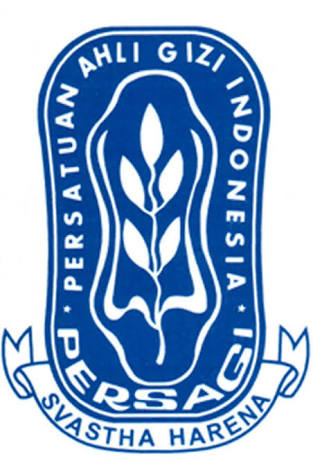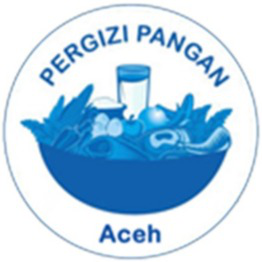Effectiveness of Pumpkin Pudding and Pineapple Pudding on Blood Glucose Levels in Diabetic Patients
Abstract
Hyperglycemia, often known as high blood sugar, is a disease that causes diabetes. Free radicals are produced as a result of hyperglycemia. Due to elevated blood sugar levels, the antioxidant content in pumpkin and pineapple can prevent the formation of free radicals. Reducing blood glucose levels as a result. The purpose of the study is to determine whether giving diabetics pumpkin and pineapple pudding lowers their random blood glucose levels.
This type of research is a quasi-experimental design with a pretest and posttest with control group. The sampling technique used was purposive sampling with a sample of 30 diabetic patients, consisting of 2 groups (which were given pumpkin and pineapple pudding): each consisted of 15 patients. Provision for 7 days in a row as much as 250 gr. Random blood glucose levels were measured one day before and after the intervention using the Blood Glucose test. Data analysis using Wilcoxon and Mann Whitney test.
The results of this study showed a significant difference in decreasing random blood glucose levels in patients who were given pumpkin pudding (P1) and patients who were given pineapple pudding (P2) between initial and final random blood glucose levels. This research also shows the effectiveness of pumpkin and pineapple pudding in lowering random blood glucose levels.Full Text:
PDFReferences
Ayda, M. K., Muthmainah, M., & Febrinasari, R. P. (2022). Effectiveness of Pumpkin Extract (Cucurbita moschata) Lowering Blood Glucose and Malondialdehyde Levels in Diabetic Model Rats. Jurnal Aisyah : Jurnal Ilmu Kesehatan. https://doi.org/10.30604/jika.v7i4.1401
Chandra, K., Singh, P., Dwivedi, S., & Jain, S. (2019). Diabetes Mellitus and Oxidative Stress: A Co-relative and Therapeutic Approach. JOURNAL OF CLINICAL AND DIAGNOSTIC RESEARCH. https://doi.org/10.7860/jcdr/2019/40628.12878
Decroli, D. E. (2019). BUKU DIABETES MELLITUS TIPE 2 (LENGKAP). In Pusat penerbitan bagian ilmu penyakit dalam fakultas kedokteran unversitas andalas padang.
El-Shazly, S. A., Ahmed, M. M., AL-Harbi, M. S., Alkafafy, M. E., El-Sawy, H. B., & Amer, S. A. M. (2018). Physiological and molecular study on the anti-obesity effects of pineapple (Ananas comosus) juice in male Wistar rat. Food Science and Biotechnology. https://doi.org/10.1007/s10068-018-0378-1
Fathonah, R., Indriyani, A., & Yuktiana, K. (2014). Labu Kuning ( Cucurbita moschata Durch.) untuk Penurunan Kadar Glukosa Darah Puasa pada Tikus Model Diabetik. Global Medical and Health Communication, 2(1), 27–33.
Hawa, I. I., & Murbawani, E. A. (2015). PENGARUH PEMBERIAN FORMULA ENTERAL BERBAHAN DASAR LABU KUNING (Cucurbita moschata) TERHADAP KADAR GLUKOSA DARAH POSTPRANDIAL TIKUS DIABETES MELITUS. Journal of Nutrition College. https://doi.org/10.14710/jnc.v4i4.10115
Jin, H., Zhang, Y. J., Jiang, J. X., Zhu, L. Y., Chen, P., Li, J., & Yao, H. Y. (2013). Studies on the extraction of pumpkin components and their biological effects on blood glucose of diabetic mice. Journal of Food and Drug Analysis. https://doi.org/10.1016/j.jfda.2013.05.009
Kementrian Kesehatan RI. (2017). Tabel Komposisi Makanan. In AVERROUS: Jurnal Kedokteran dan Kesehatan Malikussaleh.
Liu, Z., Ren, Z., Zhang, J., Chuang, C. C., Kandaswamy, E., Zhou, T., & Zuo, L. (2018). Role of ROS and nutritional antioxidants in human diseases. In Frontiers in Physiology. https://doi.org/10.3389/fphys.2018.00477
Ridwan, A. S., Suryoadji, K. A., Rycko, N. S., & Wisnu, W. (2023).
EFFECTIVENESS OF ZINC SUPPLEMENTATION FOR TYPE II DIABETES PREVENTION: A SYSTEMATIC REVIEW. BIMIKI (Berkala Ilmiah Mahasiswa Ilmu Keperawatan Indonesia). https://doi.org/10.53345/bimiki.v10i2.322
Rochmawati, A., & Ardiansyah, S. (2018). Uji Aktivitas Antidiabetes Ekstrak Bonggol Nanas (Ananas comusus L.) pada Tikus yang Di induksi Aloksan. Medicra (Journal of Medical Laboratory Science/Technology). https://doi.org/10.21070/medicra.v1i1.1473
Saeedi, P., Petersohn, I., Salpea, P., Malanda, B., Karuranga, S., Unwin, N., Colagiuri, S., Guariguata, L., Motala, A. A., Ogurtsova, K., Shaw, J. E., Bright, D., & Williams, R. (2019). Global and regional diabetes prevalence estimates for 2019 and projections for 2030 and 2045: Results from the International Diabetes Federation Diabetes Atlas, 9th edition. Diabetes Research and Clinical Practice. https://doi.org/10.1016/j.diabres.2019.107843
Shi, L., Du, X., Guo, P., Huang, L., Qi, P., & Gong, Q. (2020). Ascorbic acid supplementation in type 2 diabetes mellitus: A protocol for systematic review and meta-analysis. In Medicine (United States). https://doi.org/10.1097/MD.0000000000023125
Soviana, E., Rachmawati, B., & Widyastiti, N. S. (2014). Pengaruh suplementasi β-carotene terhadap kadar glukosa darah dan kadar malondialdehida pada tikus sprague dawley yang diinduksi Streptozotocin. Jurnal Gizi Indonesia (The Indonesian Journal of Nutrition). https://doi.org/10.14710/jgi.2.2.41-46
DOI: https://doi.org/10.35308/jns.v4i2.8189
Refbacks
- There are currently no refbacks.
Managed by Department of Nutrition, Faculty of Public Health
Published by Universitas Teuku Umar ,
Website: http://jurnal.utu.ac.id/JNS/index
Email: jns@utu.ac.id
Phone/Fax: +62-852-7736-5563; E-mail:
This work is licensed under a Creative Commons Attribution-ShareAlike 4.0 International License.














